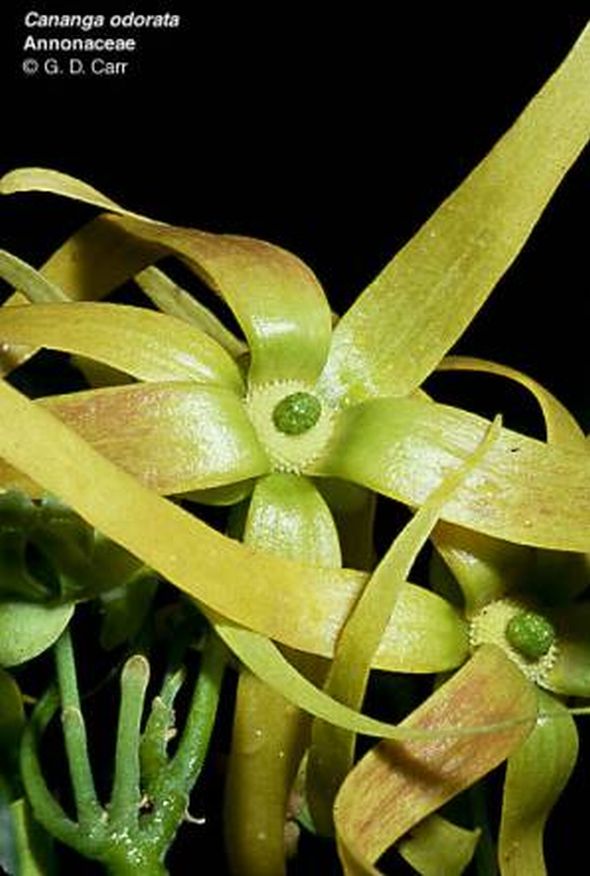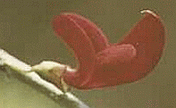
Plant Family: Belongs to the Annonaceae family, which includes the Sugar Apple (Annona squamosa), soursop (Annona muricata) and the Cashima or Custard Apple (Annona reticulata).
Description: Large, quick-growing, soft-wooded tree, 18-25 m tall (60-80 ft); large greenish-yellow, strongly scented flowers yielding Ylang Ylang oil; flowers have one whorl of persistent 3-segmented sepals and two whorls of petals each with three segments; sepals are small compared to the much larger petals in top two whorls; pistils remain distinct, each developing into berry-like ovoid fruit with numerous seeds, each flower giving rise to a cluster of these berries which turn black when ripe; mature trees flower and fruit almost continuously.
Natural Habitat: Favors moist valleys to 800 m in tropics (2600 ft); readily propagated by seed, more difficult by cuttings.
Origin and Distribution: Native to Tropical Asia, especially Indonesia and Phillipines.
Uses: Plant is often cultivated as an ornamental for its quick growth and exotic aroma of its flowers. Flowers yield an oil used in the popular scent known as Ylang Ylang, and also in other high grade perfumes, such as Channel #5; medicinally, oil reportedly has curative properties, being used in aroma-therapy and for slowing down rapid breathing and rapid heart rate.
References:
H.F. Macmillan. Tropical Planting and Gardening. Macmillan, London 1956
Institute of Pacific Islands Forestry. “Cananga odorata” in Pacific Islands Ecosystems at Risk (PIER), USDA Forest Service, Washington, DC 2003.
| 


